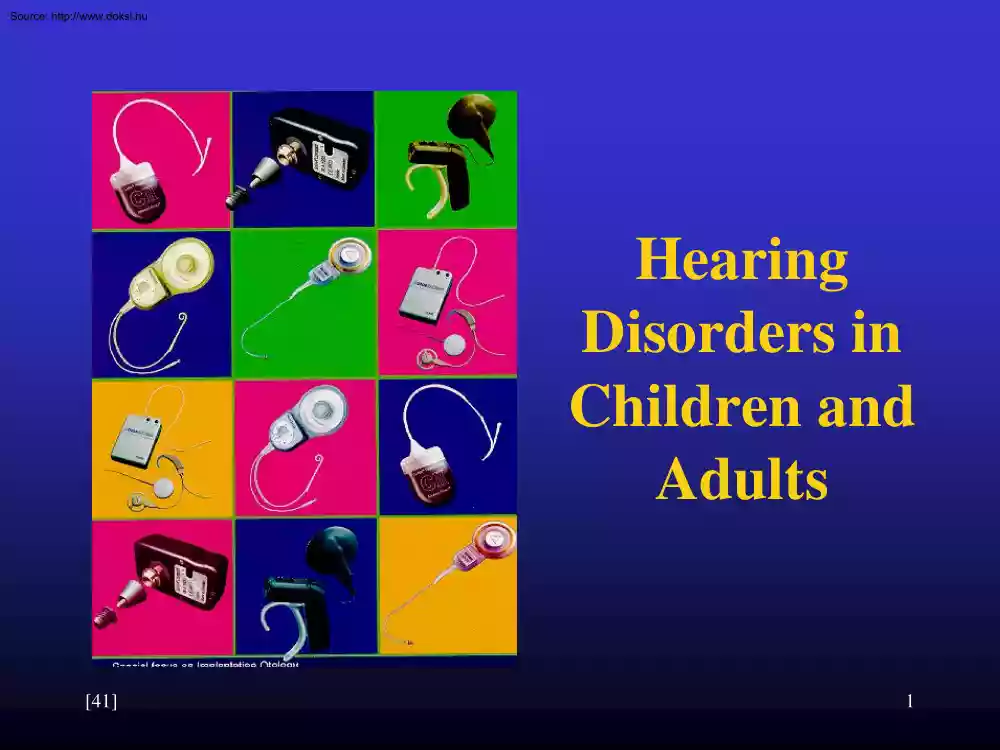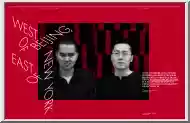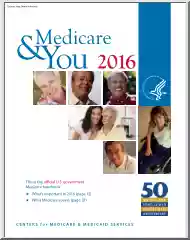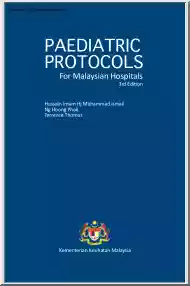Please log in to read this in our online viewer!

Please log in to read this in our online viewer!
No comments yet. You can be the first!
What did others read after this?
Content extract
Hearing Disorders in Children and Adults [41] 1 Importance of hearing • Communication is based on speech and hearing • Continuous contact with the environment • Consequences of severe deafness in childhood delayed development of speech, reading difficulties, intellectual and emotional disorders, behavioral disturbances, articulation problems • Severe deafness in adults Isolation, depression, secondary speech disorders [41] 2 Statistical data • WHO (2001): 50 million hard of hearing patients all over the world, 30% severely deaf, 20% children • 10% of the population is involved, 5-6% needs rehabilitation • Incidence of hearing disorders in infants in Hungary is 1% (=1000 newborn/year must be rehabilitated!) • Distribution of hearing disorders according to localization: -sensorineural: 60% -conductive: 30% -mixed: 10% [41] 3 Basics of audiology • The decibel (dB) is a relative value, which compares one sound pressure to another. dB=10 log I/I0
• 1 dB=1.26x • 3 dB=2x • 10 dB=10x • 20 dB=100x • 60 dB=1 000 000-fold increase of intensity, etc. • Hearing range 0-120 dB (20μPa-20Pa/1000 Hz) • Hearing loss: -normal 0-25 dB -slight deafness 25-40 dB -moderate deafness 41-60 dB -severe deafness 61-90 dB -profound deafness >90 dB -total deafness no hearing at all [41] 4 Normal pure tone threshold audiogram [41] 5 What do you have to think of if the patient complains about sudden deafness? • If there is no other symptom: wax (impacted cerumen) • If there is pain, too: otitis externa, furuncule of the external meatus, acute purulent otitis media (adults) • If pain is accompanied with fever: acute purulent otitis media (children) • If there is feeling of pressure and fullness in the ear accompanying a common cold: tubal occlusion • If there is also severe vertigo and discharge: labyrinthitis (complication of chronic otitis) • If there is also tinnitus and vertigo: acute hearing loss
(microcirculation disorder of the inner ear), acoustic neuroma • If there is also an attack of vertigo and tinnitus: Meniere`s disease • If there is also trauma in case history: perforation of the tympanic membrane, labyrinth commotion, pyramidal fracture, [41] 6 acute acoustic trauma What do you have to think of if the patient complains about progressive hearing loss? • Presbyacusis: symmetrical bilateral hearing loss in older patients, speech comprehension is diminished, recruitment • Noise induced hearing loss : there is also tinnitus, hearing loss is affected by exposition time/intensity/quality of noise • Otosclerosis: in young (female) patients, often bilateral, familial disposition, tinnitus • Hereditery deafness: family history • Acoustic neurome: tinnitus, vertigo, in some cases facial palsy • Chronic purulent otitis media: discharge, perforation of the tympanic membrane • Tympanosclerosis, adhesive process [41] 7 What is an emergency at a hearing
impaired patient? • Suspicion of acute hearing loss • Trauma (skull base fracture, perforation of tympanic membrane, acoustic trauma) • Pain (otalgia)+discharge+vertigo+facial palsy • Pain+discharge+vertigo • Pain+discharge+fever • Pain+discharge • Pain [41] 8 Diagnosis of hearing loss • Case history (family history, special ENT history, medications, trauma, noise, accompanying symptoms, internal diseases, etc.) • ENT physical examination • Audiological examination (pure tone threshold, speech audiometry, tympanometry, stapedial reflex, objective audiometry, otoacoustic emission) • Radiological assessment (Schüller`s view, CT,MR) • Otoneurology • Neurology • Internal diseases • Laboratory examinations [41] 9 Characteristical hearing losses • High frequency hearing loss: acoustic trauma, presbyacusis • Low frequency hearing loss: M. Meniere, otitis media, otosclerosis • Speech discrimination loss: lesion of the inner ear or n.VIII •
Fluctuating hearing loss: M. Meniere, acute hearing loss • Better hearing in noise: conductive hearing loss • Unilateral hearing loss: M. Meniere, acoustic neurinome • Bilateral hearing loss: presbyacusis, noise induced hearing loss, ototoxic lesions [41] 10 What do we have to ask from the patient? • Since when does the patient have hearing loss? • Is it unilateral or bilateral ? • Is it permanent or intermittent? • How severe is the hearing loss? • Is there a discharge, tinnitus, vertigo, pain? • Did the patient have ear surgery or any otological event previously? [41] 11 Etiology and incidence of hearing losses 12% 11% [41] 23% 22% 12% presbyacusis ismeretlen idegi chronicus ot. fertőzés veleszületett M.Meniere egyéb 11% zajártalom tympanosclerosis trauma otoscler. toxikus acut 12 [41] 13 Conductive hearing loss • Etiology: diseases of external and middle ear • Usually surgically treated • Speech is soft and monotonous • Good
speech comprehension with appropriate amplification • No significant articulation disorder [41] 14 Conductive hearing loss [41] 15 Conductive hearing loss 1. • Wax (use of cotton Q-tips is forbidden!) • Foreign body (it mustn`t be removed with a simple forceps!) • Severe otitis externa (importance of local treatment, exclusion of diabetes, must avoid irritants and Q-tips!) • Congenital or acquired meatal atresia, ossicular abnormalities) • Osteoma, exostosis • Tumors of the external and middle ear [41] 16 Foreign body in the external meatus (bead) [41] 17 Cerumen [41] 18 Multiple exostoses in the ear canal [41] 19 Conductive hearing loss 2. • Traumatic perforation of the tympanic membrane (must avoid water! Must be examined by a specialist, often closes spontaneously) • Tubal catarrh, serosus otitis media (usually during/after a common cold, caused by adenoid vegetation in case of children, in adults tumor of the epipharynx must be
excluded!) • Acut purulent otitis media (decongestant nasal drops, local heat, ATB, myringotomy in selected cases, if hearing loss persists for more than 4 weeks=surgery) • Chronic purulent otitis media (perforation, discharge, hearing loss=surgery!) [41] 20 Serous otitis media [41] 21 Acute purulent otitis media [41] 22 Chronic mesotympanic otitis media [41] 23 Conductive hearing loss 3. • Otosclerosis (localized disease of bone metabolism in the labyrinth bony capsulecauses ankylosis of the stapes in the oval window, in young patients, usually bilateral, often in family history, stapedectomia/stapedotomia) • Tympanosclerosis, adhesive process (consequence of insufficiently healed inflammations, importance of prevention!) • Disruption of the ossicular chain (after previous operations or myringotomy) • Longitudinal pyramidal fracture (importance of previous otological case history and tuning-fork findings ) [41] 24 Tympano sclerosis [41] 25
Sensorineural hearing loss • Etiology: diseases of inner ear and upper auditory pathways • Usually treated with conservative methods (hearing aids, infusions, vitamins), but might be operated in selected cases • Speech is much too loud • Speech comprehension problems • In severe, untreated cases articulation problems [41] 26 Sensorineural hearing loss [41] 27 Sensorineural hearing loss 1. • Congenital inner ear malformations (Michel, Mondini) • Hereditary hearing loss or deafness -sporadic -progressive familial -combined with other inherited symptoms (Usher/retinitis pigmentosa, Alport/chronic nephritis, Pendred/thyroid gland disorders, etc.) • Prenatal acquired (rubella, syphilis, toxoplasma, herpes zoster, CMV, toxic damages, fetal hypoxia, diabetes, irradiation) • Perinatal (fetal asphyxia, erythroblastosis foetalis) [41] 28 Sensorineural hearing loss 2. Postnatally acquired hearing losses • Trauma (perilymph-fistule, labyrinth commotion,
pyramidal transverse fractures) • Noise-induced (acoustic-trauma, noise-induced hearing loss) • Presbyacusis • Toxic lesions (exogen toxins:aminoglycosids!!!, industrial toxins, diuretics, cytostatics, nicotin, alcohol, salycilates, quinine, dihydrostreptomycin, endogen toxins: toxic metabolits of renal disease and diabetes mellitus) • Microcirculation disorders (hypertonic disease, arteriosclerosis, diabetes, lipid metabolism disorders, nicotin, vertebrobasilar insufficiency) • Infections (meningitis, mumps, herpes zoster, measles, scarlatina, lues, tbc, Lyme-disease, influenza) • M. Meniere • Tumors (acoustic neuroma), metastasis, congenital cholesteatoma • Sclerosis multiplex [41] 29 Herpes zoster oticus [41] 30 Noise-induced hearing loss [41] 31 Presbyacusis [41] 32 Recruitment phenomenon [41] 33 Speech audiogram [41] 34 Sensorineural hearing loss 3. Therapy • Importance of prevention (noise, ototoxic antibiotics) • Acute
hearing loss: vasodilatator infusions, vitamins, corticosteroids, treatment of internal diseases • Chronic hearing loss: hearing aid, in case of symmetrical hearing loss bilaterally • In selected cases of profound bilateral hearing loss of cochlear origin: cochlear implantation [41] 35 Mixed hearing loss [41] 36 Acute hearing loss • It is a medical emergency! • Symptoms: feeling of pressure in the ear tinnitus severe hearing loss or complete deafness • Usually caused by a disorder of microcirculation of the inner ear (occasionally may be an autoimmun disease) • Diagnosis: generally unilateral sensorineural hearing loss with recruitment • Differencial diagnosis: acoustic neuroma, acute tubal catarrh, impacted cerumen, viral infections (mumps, herpes zoster, influenza) • Immediate vasodilatation or low-molecular weight infusions, if an autoimmune disease is suspected, prolonged corticosteroids are given [41] 37 Hearing loss in childhood When to suspect it?
• If a newborn consistently doesn`t react to noise • If the tone of crying is unusual • Delayed development of speech • Slurred articulation • Acoustic inattention • Unusual behaviour (introversion or aggressivity) [41] 38 Risk factors of hearing loss in childhood • Intrauterin, peri- és postnatal infections • Neonatal hyperbilirubinaemia • Craniofacial disorders • Hearing loss in family history • Symptoms of well known syndromes combined with hearing loss • NICU treatment lasting more than 48 hours • Syndromes with progressive hearing losses • Neurodegeneratíve illnesses 39 • [41]Parental suspicions Diagnosis and treatment of hearing impaired children • In case of suspicious symptoms and risk factors immediate assessment of hearing (and treatment) is needed! • Infancy: objective measurements (otoacoustic emission, stapedial reflex, auditory brainstem audiometry) • Early childhood: playaudiometry and objective measurements •
Schoolchildren: pure tone audiometry may be performed • Immediate therapy according to cause and degree of hearing loss • Aim: prevention of auditory deprivation, acquiring speech, hearing training, attending normal schools • In case of profound bilateral inner ear deafness, which can`t be corrected with hearing aids: early cochlear implantation (in 2-3 years [41] of age) 40 Prevention of hearing loss • Protection of hearing against noise, systematical screenings • Avoiding ototoxic antibiotics (aminoglycosids), in case of need close monitoring (renal function!) • In case of acute hearing loss immediate hospitalisation • Introduction of systematical screening routinely from the time of birth in all over the country • Close observation of children with risk factors • Rehabilitation of patients with hearing aids • Education of people about hearing [41] 41
• 1 dB=1.26x • 3 dB=2x • 10 dB=10x • 20 dB=100x • 60 dB=1 000 000-fold increase of intensity, etc. • Hearing range 0-120 dB (20μPa-20Pa/1000 Hz) • Hearing loss: -normal 0-25 dB -slight deafness 25-40 dB -moderate deafness 41-60 dB -severe deafness 61-90 dB -profound deafness >90 dB -total deafness no hearing at all [41] 4 Normal pure tone threshold audiogram [41] 5 What do you have to think of if the patient complains about sudden deafness? • If there is no other symptom: wax (impacted cerumen) • If there is pain, too: otitis externa, furuncule of the external meatus, acute purulent otitis media (adults) • If pain is accompanied with fever: acute purulent otitis media (children) • If there is feeling of pressure and fullness in the ear accompanying a common cold: tubal occlusion • If there is also severe vertigo and discharge: labyrinthitis (complication of chronic otitis) • If there is also tinnitus and vertigo: acute hearing loss
(microcirculation disorder of the inner ear), acoustic neuroma • If there is also an attack of vertigo and tinnitus: Meniere`s disease • If there is also trauma in case history: perforation of the tympanic membrane, labyrinth commotion, pyramidal fracture, [41] 6 acute acoustic trauma What do you have to think of if the patient complains about progressive hearing loss? • Presbyacusis: symmetrical bilateral hearing loss in older patients, speech comprehension is diminished, recruitment • Noise induced hearing loss : there is also tinnitus, hearing loss is affected by exposition time/intensity/quality of noise • Otosclerosis: in young (female) patients, often bilateral, familial disposition, tinnitus • Hereditery deafness: family history • Acoustic neurome: tinnitus, vertigo, in some cases facial palsy • Chronic purulent otitis media: discharge, perforation of the tympanic membrane • Tympanosclerosis, adhesive process [41] 7 What is an emergency at a hearing
impaired patient? • Suspicion of acute hearing loss • Trauma (skull base fracture, perforation of tympanic membrane, acoustic trauma) • Pain (otalgia)+discharge+vertigo+facial palsy • Pain+discharge+vertigo • Pain+discharge+fever • Pain+discharge • Pain [41] 8 Diagnosis of hearing loss • Case history (family history, special ENT history, medications, trauma, noise, accompanying symptoms, internal diseases, etc.) • ENT physical examination • Audiological examination (pure tone threshold, speech audiometry, tympanometry, stapedial reflex, objective audiometry, otoacoustic emission) • Radiological assessment (Schüller`s view, CT,MR) • Otoneurology • Neurology • Internal diseases • Laboratory examinations [41] 9 Characteristical hearing losses • High frequency hearing loss: acoustic trauma, presbyacusis • Low frequency hearing loss: M. Meniere, otitis media, otosclerosis • Speech discrimination loss: lesion of the inner ear or n.VIII •
Fluctuating hearing loss: M. Meniere, acute hearing loss • Better hearing in noise: conductive hearing loss • Unilateral hearing loss: M. Meniere, acoustic neurinome • Bilateral hearing loss: presbyacusis, noise induced hearing loss, ototoxic lesions [41] 10 What do we have to ask from the patient? • Since when does the patient have hearing loss? • Is it unilateral or bilateral ? • Is it permanent or intermittent? • How severe is the hearing loss? • Is there a discharge, tinnitus, vertigo, pain? • Did the patient have ear surgery or any otological event previously? [41] 11 Etiology and incidence of hearing losses 12% 11% [41] 23% 22% 12% presbyacusis ismeretlen idegi chronicus ot. fertőzés veleszületett M.Meniere egyéb 11% zajártalom tympanosclerosis trauma otoscler. toxikus acut 12 [41] 13 Conductive hearing loss • Etiology: diseases of external and middle ear • Usually surgically treated • Speech is soft and monotonous • Good
speech comprehension with appropriate amplification • No significant articulation disorder [41] 14 Conductive hearing loss [41] 15 Conductive hearing loss 1. • Wax (use of cotton Q-tips is forbidden!) • Foreign body (it mustn`t be removed with a simple forceps!) • Severe otitis externa (importance of local treatment, exclusion of diabetes, must avoid irritants and Q-tips!) • Congenital or acquired meatal atresia, ossicular abnormalities) • Osteoma, exostosis • Tumors of the external and middle ear [41] 16 Foreign body in the external meatus (bead) [41] 17 Cerumen [41] 18 Multiple exostoses in the ear canal [41] 19 Conductive hearing loss 2. • Traumatic perforation of the tympanic membrane (must avoid water! Must be examined by a specialist, often closes spontaneously) • Tubal catarrh, serosus otitis media (usually during/after a common cold, caused by adenoid vegetation in case of children, in adults tumor of the epipharynx must be
excluded!) • Acut purulent otitis media (decongestant nasal drops, local heat, ATB, myringotomy in selected cases, if hearing loss persists for more than 4 weeks=surgery) • Chronic purulent otitis media (perforation, discharge, hearing loss=surgery!) [41] 20 Serous otitis media [41] 21 Acute purulent otitis media [41] 22 Chronic mesotympanic otitis media [41] 23 Conductive hearing loss 3. • Otosclerosis (localized disease of bone metabolism in the labyrinth bony capsulecauses ankylosis of the stapes in the oval window, in young patients, usually bilateral, often in family history, stapedectomia/stapedotomia) • Tympanosclerosis, adhesive process (consequence of insufficiently healed inflammations, importance of prevention!) • Disruption of the ossicular chain (after previous operations or myringotomy) • Longitudinal pyramidal fracture (importance of previous otological case history and tuning-fork findings ) [41] 24 Tympano sclerosis [41] 25
Sensorineural hearing loss • Etiology: diseases of inner ear and upper auditory pathways • Usually treated with conservative methods (hearing aids, infusions, vitamins), but might be operated in selected cases • Speech is much too loud • Speech comprehension problems • In severe, untreated cases articulation problems [41] 26 Sensorineural hearing loss [41] 27 Sensorineural hearing loss 1. • Congenital inner ear malformations (Michel, Mondini) • Hereditary hearing loss or deafness -sporadic -progressive familial -combined with other inherited symptoms (Usher/retinitis pigmentosa, Alport/chronic nephritis, Pendred/thyroid gland disorders, etc.) • Prenatal acquired (rubella, syphilis, toxoplasma, herpes zoster, CMV, toxic damages, fetal hypoxia, diabetes, irradiation) • Perinatal (fetal asphyxia, erythroblastosis foetalis) [41] 28 Sensorineural hearing loss 2. Postnatally acquired hearing losses • Trauma (perilymph-fistule, labyrinth commotion,
pyramidal transverse fractures) • Noise-induced (acoustic-trauma, noise-induced hearing loss) • Presbyacusis • Toxic lesions (exogen toxins:aminoglycosids!!!, industrial toxins, diuretics, cytostatics, nicotin, alcohol, salycilates, quinine, dihydrostreptomycin, endogen toxins: toxic metabolits of renal disease and diabetes mellitus) • Microcirculation disorders (hypertonic disease, arteriosclerosis, diabetes, lipid metabolism disorders, nicotin, vertebrobasilar insufficiency) • Infections (meningitis, mumps, herpes zoster, measles, scarlatina, lues, tbc, Lyme-disease, influenza) • M. Meniere • Tumors (acoustic neuroma), metastasis, congenital cholesteatoma • Sclerosis multiplex [41] 29 Herpes zoster oticus [41] 30 Noise-induced hearing loss [41] 31 Presbyacusis [41] 32 Recruitment phenomenon [41] 33 Speech audiogram [41] 34 Sensorineural hearing loss 3. Therapy • Importance of prevention (noise, ototoxic antibiotics) • Acute
hearing loss: vasodilatator infusions, vitamins, corticosteroids, treatment of internal diseases • Chronic hearing loss: hearing aid, in case of symmetrical hearing loss bilaterally • In selected cases of profound bilateral hearing loss of cochlear origin: cochlear implantation [41] 35 Mixed hearing loss [41] 36 Acute hearing loss • It is a medical emergency! • Symptoms: feeling of pressure in the ear tinnitus severe hearing loss or complete deafness • Usually caused by a disorder of microcirculation of the inner ear (occasionally may be an autoimmun disease) • Diagnosis: generally unilateral sensorineural hearing loss with recruitment • Differencial diagnosis: acoustic neuroma, acute tubal catarrh, impacted cerumen, viral infections (mumps, herpes zoster, influenza) • Immediate vasodilatation or low-molecular weight infusions, if an autoimmune disease is suspected, prolonged corticosteroids are given [41] 37 Hearing loss in childhood When to suspect it?
• If a newborn consistently doesn`t react to noise • If the tone of crying is unusual • Delayed development of speech • Slurred articulation • Acoustic inattention • Unusual behaviour (introversion or aggressivity) [41] 38 Risk factors of hearing loss in childhood • Intrauterin, peri- és postnatal infections • Neonatal hyperbilirubinaemia • Craniofacial disorders • Hearing loss in family history • Symptoms of well known syndromes combined with hearing loss • NICU treatment lasting more than 48 hours • Syndromes with progressive hearing losses • Neurodegeneratíve illnesses 39 • [41]Parental suspicions Diagnosis and treatment of hearing impaired children • In case of suspicious symptoms and risk factors immediate assessment of hearing (and treatment) is needed! • Infancy: objective measurements (otoacoustic emission, stapedial reflex, auditory brainstem audiometry) • Early childhood: playaudiometry and objective measurements •
Schoolchildren: pure tone audiometry may be performed • Immediate therapy according to cause and degree of hearing loss • Aim: prevention of auditory deprivation, acquiring speech, hearing training, attending normal schools • In case of profound bilateral inner ear deafness, which can`t be corrected with hearing aids: early cochlear implantation (in 2-3 years [41] of age) 40 Prevention of hearing loss • Protection of hearing against noise, systematical screenings • Avoiding ototoxic antibiotics (aminoglycosids), in case of need close monitoring (renal function!) • In case of acute hearing loss immediate hospitalisation • Introduction of systematical screening routinely from the time of birth in all over the country • Close observation of children with risk factors • Rehabilitation of patients with hearing aids • Education of people about hearing [41] 41




 Just like you draw up a plan when you’re going to war, building a house, or even going on vacation, you need to draw up a plan for your business. This tutorial will help you to clearly see where you are and make it possible to understand where you’re going.
Just like you draw up a plan when you’re going to war, building a house, or even going on vacation, you need to draw up a plan for your business. This tutorial will help you to clearly see where you are and make it possible to understand where you’re going.